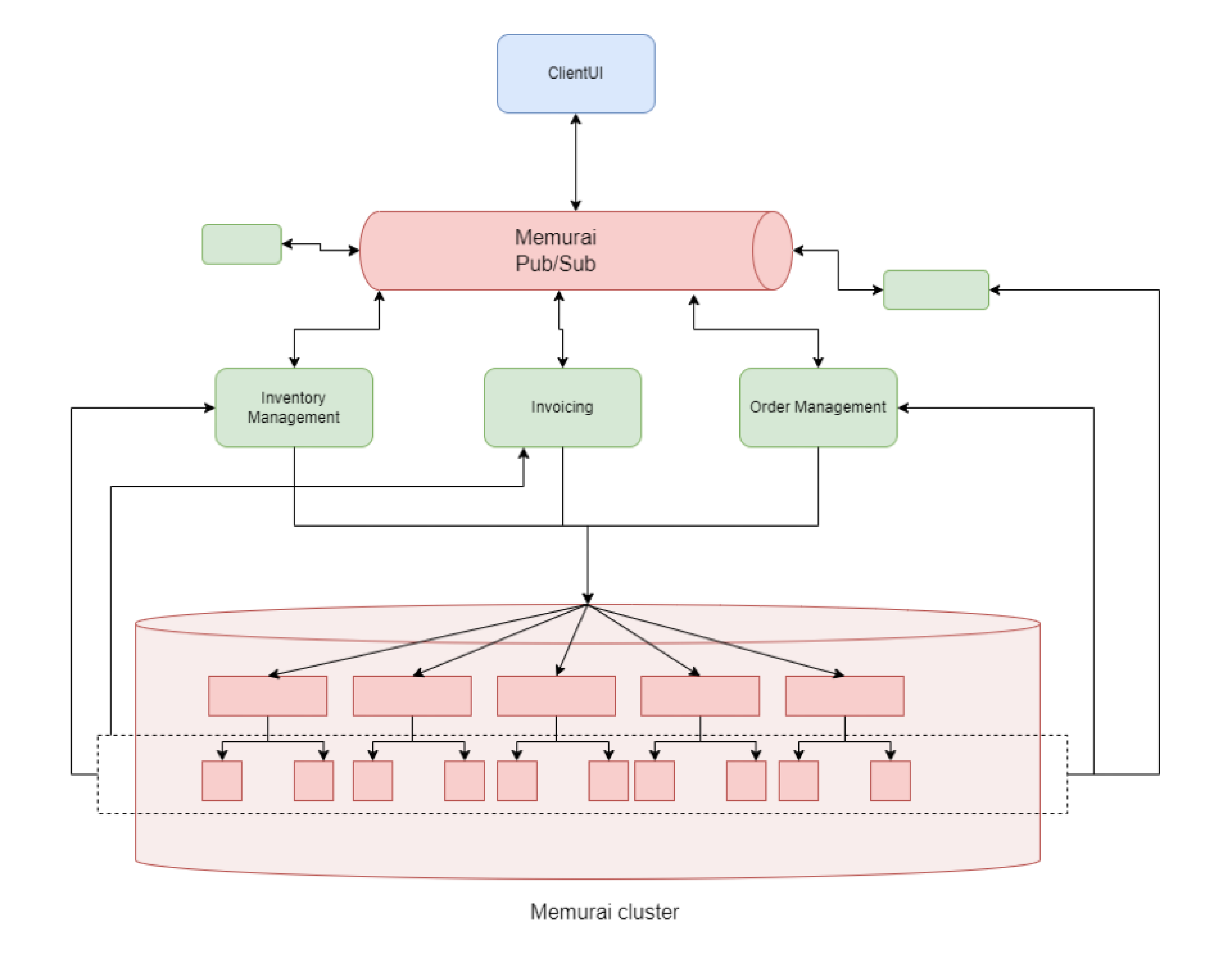
Wherever you look, it's clear that today's data landscape is undergoing constant shift. And in such an environment, Windows-based applications require architectures robust enough to keep up.
Enter the concept of reactive architecture, a system design paradigm critical for real-time, scalable applications. Coupled with Redis and its Windows-compatible alternatives like Memurai, this architecture ensures that enterprise applications are responsive, resilient, elastic, and message-driven.
This article will explore the intricacies of these systems and how they integrate into the Windows environment.
The Core of Reactive Architecture
The heartbeat of a reactive system is its ability to stay alive and kicking despite the chaos of high demands by optimizing communication channels between microservices. As an added bonus, a reactive architecture provides UI developers the tools to create a much richer experience for their users.
These architectures rest on the following four pillars:
Message-Driven: This architecture thrives on asynchronous messaging (also known as event-driven messaging), with different parts of the system communicating and reacting to each other's inputs without tripping over their own feet. This is the key to the rest of the pillars, and the "secret sauce" that makes this such a great architectural pattern. This is all true, of course, as long as the centerpiece of the architecture, the message bus, is robust enough to deal with the message chatter generated by your microservices.
Responsiveness: The system responds in a timely manner, providing rapid and consistent user interactions. No matter the workload or the type of action the user is trying to achieve, there is always a timely response. Mind you, that doesn't mean the final output is returned every time, in some situations an "OK, we're processing your request" is all you get. However, that message coupled with an update the second when the final output is ready provides a much better user experience than letting your UI freeze waiting for a response that could take minutes. During that time, the users of a reactive architecture can be doing many other tasks within your system.
Resiliency: It remains steadfast in the face of failure, ensuring high availability and rapid recovery. This is because of the message bus at its core. There is no direct communication between services, which means that if there is a failure, messages are left unattended until the failed service is restored and processing can resume.
Elasticity: An event-driven system can scale both out and in, in proportion to the workload, ensuring optimal resource usage. Another benefit of the core message-driven architecture. Scaling portions of the system becomes trivially simple, especially if on top of your infrastructure you have a proper monitoring system capable of performing actions based on the data collected (as in, trigger scaling rules). You can horizontally scale a single event-driven microservice if you need to, and have all versions of it working with the same message bus. As long as your event-capture logic is sound enough, you'll just have more processing power for those heavy computational needs your platform might suddenly have. In Windows enterprise settings, these principles are the building blocks for scalable and robust application infrastructure. Windows services, often rigid and monolithic, can transform into agile, responsive components of a larger, more dynamic whole.
Redis and Its Windows-Friendly Alternatives
Redis is like a Swiss Army knife for developers, it can do everything from working as a "simple" key-value pair storage, to a super fast and performant cache, to even have several data transfer patterns incorporated (as in pub/sub, streams, etc) —but Windows users traditionally faced hurdles in using this tool to its full potential. Running Redis natively on Windows used to be a complicated task and it would never yield the best results, forcing developers to resort to workarounds like VMs or Docker containers.
Memurai emerged as the Windows-friendly alternative to native Redis, offering a seamless transition from Redis, without any compatibility headaches. Designed to meet Windows developers' needs, Memurai sidesteps the obstacles by providing a native experience that mirrors Redis's capabilities, as discussed in detail in this blog post.
Enterprise Use Cases
There are many use cases where this architecture can fit and even improve within the enterprise environment.
Let's look at some examples where Memurai's would be an integral piece within the architecture.
First, consider chats and messaging platforms where instant interactions are non-negotiable. You want your users to know things like who's typing, who's online or even receive a message milliseconds after it was sent. While in tech there is no real "real-time" experience, we need to get as close as possible to the illusion of real-time. Here, Memurai steps in, ensuring messages flow through the veins of the platform swiftly and accurately, a necessity that's highlighted in the "Using Redis for Chat and Messaging" blog post.
Next, turn to the retail sector plagued by dynamic inventory changes. Real-time inventory management becomes crucial, as outlined in "Why Real-Time Inventory is More Important Than Ever" Memurai operates behind the scenes to update inventory counts, keeping customers and retailers on the same page, reducing errors and enhancing user experience.
What about other areas like game development? Keeping track of online leaderboards can be a challenge on its own. When massive online multiplayer games with millions of concurrent players want to keep track of who's winning, there are few technical solutions compatible with Windows platforms that provide the speed that Memurai does. This article goes into more detail about the benefits of a solution such as Memurai in the space of real-time data gathering and high-performance computing. These scenarios underscore the effectiveness of Redis and its alternatives like Memurai in providing reactive capacities to platforms within Windows environments.
Setting Up for Success
It's impossible to give practical advice for every use case, as each one has its own peculiarities and nuances that need special attention. That said, let's pretend you're building an e-commerce site and that you'd like to understand how to set up a reactive architecture and how it would benefit your platform. So let's analyze that use case here:
For an e-commerce website, reactive architecture is non-negotiable. It must transparently handle spikes during peak shopping seasons, consistently reflect inventory levels, and dynamically adapt recommendations based on user behavior. Here's how you can set up Memurai for such a demanding environment.
Cluster Configuration for Scalability:
Divide and Conquer: Create a Memurai cluster that distributes data across multiple nodes. This strategy ensures that your system can handle more data and more clients without a single point of failure. Use 'sharding' to distribute your data across different Memurai nodes in a way that maximizes performance and minimizes contention.
Tailored Read/Write Distribution: Confidential or write-heavy data can be directed to master nodes while read operations can be distributed among replica nodes. Configure your application to send write operations to the master nodes and reads to replicas to balance the load effectively.
Persistence and Backup for Reliability:
AOF vs. RDB: Memurai maintains two primary persistence options—AOF (Append Only File) and RDB (Redis Database). For an e-commerce website where transactions are crucial, it's wise to enable AOF with every write operation. This might impact performance slightly but ensures data is not lost. In less critical scenarios, you might opt for RDB snapshots at specified intervals. Regular Backups: Schedule regular backups during off-peak hours to capture consistent snapshots of your data. Automate this process and routinely verify backup integrity to ensure its reliability for recovery scenarios.
System Parameters Tuning:
Maximize Memory Usage: Configure 'maxmemory' settings appropriately to specify the maximum amount of memory Memurai can use to store data. Once this limit is reached, Memurai can proceed with an eviction policy that aligns with your application's requirements, whether it's removing least recently used keys or purging keys with expirations.
Control Client Connections: Use 'maxclients' to control the number of concurrent connections. For high-traffic periods, verify that your system and network can handle the increased number of connections without bottlenecks. Monitor Performance Metrics: Leverage Memurai-supported Redis commands like INFO, MONITOR, and SLOWLOG to monitor the performance and troubleshoot issues proactively.
Optimization for Reactive Components:
Pub/Sub for Real-Time Communication: Utilize Memurai's Pub/Sub capabilities to propagate inventory updates across the system in real-time. This ensures all components, from the user interface to backend services, reflect changes instantaneously.
Lua Scripting for Complex Transactions: Take advantage of Lua scripting for complex transactions that need to be executed atomically. This eliminates race conditions and maintains consistency especially when dealing with inventory reservations and updates.
The final architecture
In the end, here is an oversimplified version of what your architecture might look like. Here you can see how the main inter-service communication is done through Memurai's Pub/Sub, where each message can be distributed to each service without having to know anything about them. You can also appreciate how at the bottom, Memurai's cluster is sharding the incoming write requests from the services into multiple masters and each master is subsequently replicating their data into their own slaves. As suggested, services are performing the read operations from those slaves, to keep the workload balanced inside the cluster.

While your real-world use case might be different or more complex, the key characteristics should be the same:
Using Memurai to power the interservice communication (either through its Pub/Sub mode, or through the use of Streams).
Re-utilizing Memurai's storage capabilities for other time-sensitive operations shows the flexibility of the software and how it can help your infrastructure by keeping the ecosystem's diversity under control. This particular point is very relevant in enterprise environments where every piece of software that needs to be deployed has to go through security screenings and approvals before it can be used in production environments.
Conclusion
To wrap up, the value proposition of adopting a Redis-compatible reactive architecture in Windows ecosystems is clear and compelling.
It's not merely a question of keeping pace but one of seizing the future—a future where Windows-based platforms are equally equipped to handle the demands of real-time, data-heavy operations as their Unix counterparts.
As we hurdle towards an ever more data-focused, user-oriented digital age, the integration of reactive systems becomes not just advisable but essential. It's time to evaluate your technology stacks, to future-proof your enterprise, and to ensure that your systems are not just surviving but thriving.
Consider how Redis, or a fitting alternative like Memurai, can reinforce your reactive architecture on Windows and embark on this transformative journey today.

